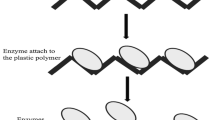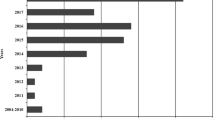Abstract
Microbial extracellular enzyme activity is responsible for much of the carbon and nutrient cycling in freshwaters, and logically there should a relationship between the chemical properties of a system and its enzymatic profile. To evaluate this concept, we surveyed extracellular enzyme activity in five large rivers (the Upper Mississippi, Missouri, Ohio, Tennessee, and Arkansas) of the Mississippi River Basin, one of the world’s largest river systems. The rivers drain areas of different climate, physiography, and land use, and differ in their physicochemical properties. Despite differences in nutrient concentrations, there were no consistent differences in enzyme activity between the five rivers, with as much variation in activity between sites on the same river as among different rivers. Enzymatic profiles were dominated by leucine aminopeptidase, phosphatase, and β-glucosidase, and appreciable enzymatic activity was still present following the removal of particles (3-micron filtration) or cells (0.22-micron filtration). The proportion of particle- or cell- associated enzymatic activity contributing to overall activity varied between enzymes, being higher for β-glucosidase, leucine aminopeptidase, and N-acetyl-β-D-glucosaminidase than for sulfatase or cellobiohydrolase. Dissolved elemental stoichiometry suggested that bacterioplankton in all rivers were limited by C overall, with P also being more limiting than N. While regional-scale patterns in enzyme activity in large rivers may indicate anthropogenic influences, this study demonstrates that finer-scale variation, such as between sites on the same river, or between particles and free-living bacterioplankton, may be equally as important.




Similar content being viewed by others
References
Alexander RB, Smith RA, Schwarz GE (2000) Effect of stream channel size on the delivery of nitrogen to the Gulf of Mexico. Nature 403:758–761
Alexander RB, Smith RA, Schwarz GE, Boyer EW, Nolan JV, Brakebill JW (2008) Differences in phosphorus and nitrogen delivery to The Gulf of Mexico from the Mississippi River Basin. Environ Sci Technol 42:822–830
Allison SD (2005) Cheaters, diffusion and nutrients constrain decomposition by microbial enzymes in spatially structured environments. Ecol Lett 8:626–635
Allison SD, Chao Y, Farrara J, Hatosy S, Martiny AC (2012) Fine-scale temporal variation in marine extracellular enzymes of coastal southern California. Front Microbiol 3:301. doi:10.3389/fmicb.2012.00301
Arnosti C, Bell C, Moorhead DL, Sinsabaugh RL, Steen AD, Stromberger M, Wallenstein M, Weintraub MN (2014) Extracellular enzymes in terrestrial, freshwater, and marine environments: perspectives on system variability and common research needs. Biogeochemistry 117:5–21
Baltar F, Aristegui J, Gasol JM, Sintes E, van Aken HM, Herndl GJ (2010) High dissolved extracellular enzymatic activity in the deep central Atlantic Ocean. Aquat Microb Ecol 58:287–302
Battin TJ, Kaplan LA, Findlay S, Hopkinson CS, Marti E, Packman AI, Newbold JD, Sabater F (2008) Biophysical controls on organic carbon fluxes in fluvial networks. Nat Geosci 1:95–100
Boschker HTS, Cappenberg TE (1998) Patterns of extracellular enzyme activities in littoral sediments of Lake Gooimeer, The Netherlands. FEMS Microb Ecol 25:79–86
Brown SE, Goulder R (1999) Changes in riverine epilithic extracellular enzyme activity in response to fish farm effluent. Lett Appl Microbiol 29:385–388
Brown AV, Brown KB, Jackson DC, Pierson WK (2005) Lower Mississippi River and its tributaries. In: Benke AC, Cushing CE (eds) Rivers of North America. Academic Press, Burlington, pp 230–281
Chappell KR, Goulder R (1995a) Enzymes as river pollutants and the response of the native epilithic extracellular-enzyme activity. Environ Pollut 86:161–169
Chappell KR, Goulder R (1995b) A between-river comparison of extracellular-enzyme activity. Microb Ecol 29:1–17
Chróst RJ (1990) Microbial ectoenzymes in aquatic environments. In: Overbeck J, Chróst RJ (eds) Aquatic microbial ecology: biochemical and molecular approaches. Springer, New York, pp 47–78
Cleveland CC, Liptzin D (2007) C/N/P stoichiometry in soil: is there a “Redfield ratio” for the microbial biomass? Biogeochemistry 85:235–252
Cole JJ, Prairie NF, Caraco NF, McDowell WH, Tranvik LJ, Striegl RG, Duarte CM, Kortelainen P, Downing JA, Middelburg JJ, Melack J (2007) Plumbing the global carbon cycle: integrating inland waters into the terrestrial carbon budget. Ecosystems 10:171–184
Crump BC, Baross JA, Simenstad CA (1998) Dominance of particle-attached bacteria in the Columbia River estuary, USA. Aquat Microb Ecol 14:7–18
David MB, Drinkwater LE, McIsaac GF (2010) Sources of nitrate yields in the Mississippi River Basin. J Environ Qual 39:1657–1667
Davis SH, Goulder R (1993) Deterioration in bacteriological quality of water through fish farms. J Appl Bacteriol 74:336–339
del Giorgio PA, Cole JJ (1998) Bacterial growth efficiency in natural aquatic systems. Annu Rev Ecol Syst 29:503–541
Goolsby DA, Battaglin WA, Lawrence GB, Artz RS, Aulenbach BT, Hooper RP, Keeney DR, Stensland GJ (1999) Flux and sources of nutrients in the Mississippi–Atchafalaya River basin. Topic 3 Report—integrated assessment of hypoxia in the Gulf of Mexico. NOAA Coastal Ocean Program Decision Analyses Series no. 17. National Oceanographic and Atmospheric Administration, Silver Springs
Harbott EL, Grace MR, Webb JA, Hart BT (2005) Small-scale temporal variation and the effect of urbanization on extracellular enzyme activity in streams. J Environ Monit 7:861–868
Hill BH, Elonen CM, Jicha TM, Bolgrien DW, Moffett MF (2010) Sediment microbial enzyme activity as an indicator of nutrient limitation in the great rivers of the Upper Mississippi basin. Biogeochemistry 97:195–209
Hill BH, Bolgrien DW, Herlihy AT, Jicha TM, Angradi TR (2011) A synoptic survey of nitrogen and phosphorus in tributary streams and great rivers of the Upper Mississippi, Missouri, and Ohio River basins. Water Air Soil Pollut 216:605–619
Howarth RW, Billen G, Swaney D, Townsend A, Jaworski N, Lajtha K, Downing JA, Elmgren R, Caraco N, Jordan T, Berendse F, Freney J, Kudeyarov V, Murdoch P, Zhao-Liang Z (1996) Regional nitrogen budgets and riverine N & P fluxes from the drainages to the North Atlantic Ocean: natural and human influences. Biogeochemistry 35:75–139
Jackson CR, Vallaire SC (2007) Microbial activity and decomposition of fine particulate organic matter in a Louisiana cypress swamp. J N Am Benthol Soc 26:743–753
Jackson CR, Foreman CM, Sinsabaugh RL (1995) Microbial enzyme activities as indicators of organic matter processing rates in a Lake Erie coastal wetland. Freshw Biol 34:329–342
Jackson CR, Tyler HL, Millar JJ (2013) Determination of microbial extracellular enzyme activity in waters, soils, and sediments using high throughput microplate assays. J Vis Exp 80:e50399. doi:10.3791/50399
Jackson CR, Millar JJ, Payne JT, Ochs CO (2014) Free-living and particle-associated bacterioplankton in large rivers of the Mississippi River Basin demonstrate biogeographic patterns. Appl Environ Microbiol 80:7186–7195. doi:10.1128/AEM.01844-14
Karrassch B, Ullrich S, Mehrens M, Zimmermann-Timm H (2003) Free and particle-associated extracellular enzyme activity and bacterial production in the Lower Elbe estuary, Germany. Acta Hydroch Hydrob 31:297–306
Lehman RM, O’Connell SP (2002) Comparison of extracellular enzyme activities and community composition of attached and free-living bacteria in porous medium columns. Appl Environ Microbiol 68:1569–1575
Martinez J, Smith DC, Steward GF, Azam F (1996) Variability in ectohydrolytic enzyme activities of pelagic marine bacteria and its significance for substrate processing in the sea. Aquat Microb Ecol 10:223–230
Meade RH, Moody JA (2010) Causes for the decline of suspended-sediment discharge in the Mississippi River system, 1940–2007. Hydrol Process 24:35–49
Nybroe O, Jorgensen PE, Henze M (1992) Enzyme activities in waste water and activated sludge. Water Res 26:579–584
Obayashi Y, Suzuki S (2008) Occurrence of exo- and endopeptidases in dissolved and particulate fractions of coastal seawater. Aquat Microb Ecol 50:231–237
Ochs CA, Pongruktham O, Zimba PV (2013) Darkness at the break of noon: phytoplankton production in the Lower Mississippi River. Limnol Oceanogr 58:555–568
Rabalais NN, Turner RE, Wiseman WJ (2002) Gulf of Mexico hypoxia, a.k.a. “The Dead Zone”. Annu Rev Ecol Syst 33:235–263
Redfield AC (1958) The biological control of chemical factors in the environment. Am Sci 46:205–221
Roland F, Cole JJ (1999) Regulation of bacterial growth efficiency in a large turbid estuary. Aquat Microb Ecol 20:31–38
Sellers T, Bukaveckas PA (2003) Phytoplankton production in a large regulated river: a modeling and mass balance assessment. Limnol Oceanogr 48:1476–1487
Simon M (1985) Specific uptake rates of amino acids by attached and free-living bacteria in a mesotrophic lake. Appl Environ Microbiol 49:1254–1259
Sinsabaugh RL, Foreman CM (2001) Activity of profiles of bacterioplankton in a eutrophic river. Freshw Biol 46:1239–1249
Sinsabaugh RL, Findlay S, Franchini P, Fischer D (1997) Enzymatic analysis of riverine bacterioplankton production. Limnol Oceanogr 42:29–38
Sinsabaugh RL, Manzoni S, Moorhead DL, Richter A (2013) Carbon use efficiency of microbial communities: stoichiometry, methodology, and modelling. Ecol Lett 16:930–939
Someville M, Billen G (1983) A method for determining exo-proteolytic activity in natural waters. Limnol Oceanogr 28:190–193
Steen AD, Arnosti C (2011) Long lifetimes of β-glucosidase, leucine aminopeptidase, and phosphatase in Arctic seawater. Mar Chem 123:127–132
Tiquia SM (2011) Extracellular hydrolytic enzyme activities of the heterotrophic microbial communities of the Rouge River: an approach to evaluate ecosystem response to urbanization. Microb Ecol 62:679–689
Turner RE, Rabalais NN (2003) Linking landscape and water quality in the Mississippi River Basin for 200 years. Bioscience 53(6):563–572
Turner RE, Rabalais NN (2004) Suspended sediment, C, N, P, and SI yields from the Mississippi River Basin. Hydrobiologia 511:79–89
Turner RE, Rabalais NN, Justic D (2008) Gulf of Mexico hypoxia: alternate states and a legacy. Environ Sci Technol 42:2323–2327
Velji MI, Albright LJ (1986) Microscopic enumeration of attached marine bacteria of seawater, marine sediment, fecal matter, and kelp blade samples following pyrophosphate and ultrasound treatments. Can J Microbiol 32:121–126
Vetter YA, Deming JW, Jumars PA, Krieger-Brockett BB (1998) A predictive model of bacterial foraging by means of freely released extracellular enzymes. Microb Ecol 36:75–92
Wetzel RG, Likens GE (2000) Limnological analyses, 3rd edn. Springer, New York
Williams CJ, Scott AB, Wilson HF, Xenopoulos MA (2012) Effects of land use on water column bacterial activity and enzyme stoichiometry in stream ecosystems. Aquat Sci 74:483–494
Ziervogel K, Karlsson E, Arnosti C (2007) Surface associations of enzymes and of organic matter: consequences for hydrolytic activity and organic matter mineralization in marine systems. Mar Chem 104:241–252
Zimmerman AE, Allison SD, Martiny AC (2013) Phylogenetic constraints on elemental stoichiometry and resource allocation in heterotrophic marine bacteria. Environ Microbiol 16:1398–1410
Acknowledgments
This study was funded by a National Science Foundation (Division of Environmental Biology 1049911) award to CAO and CRJ. We thank Alexa Lampkin and Derek Bussan for help with sample collection, Natasha Stracener for help with bacterial enumeration, and Lisa Brooks and James Hill of the USDA National Sedimentation Laboratory in Oxford, Mississippi, for water chemistry analyses.
Author information
Authors and Affiliations
Corresponding author
Additional information
Responsible Editor: James Sickman.
Electronic supplementary material
Below is the link to the electronic supplementary material.
Rights and permissions
About this article
Cite this article
Millar, J.J., Payne, J.T., Ochs, C.A. et al. Particle-associated and cell-free extracellular enzyme activity in relation to nutrient status of large tributaries of the Lower Mississippi River. Biogeochemistry 124, 255–271 (2015). https://doi.org/10.1007/s10533-015-0096-1
Received:
Accepted:
Published:
Issue Date:
DOI: https://doi.org/10.1007/s10533-015-0096-1




